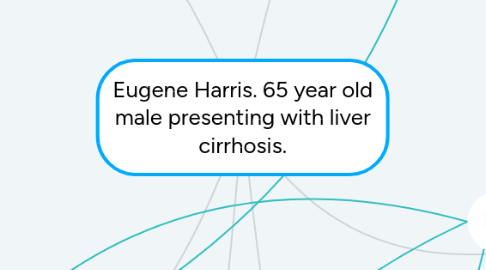
1. Nutrition
1.1. alcohol consumption
1.1.1. chronic gastritis
1.2. iron buildup
1.3. loss of appetite
1.3.1. malnutrition
1.3.2. weight loss
1.3.3. poor nutrition
1.3.3.1. impaired skin integrity
1.4. nausea
1.5. factors effecting intake and output
1.5.1. nausea
1.5.2. decreased GI motility
1.5.3. finanance
1.5.4. age
2. Noticing-dietary intake, skin integrity, change in weight, edema, jaundice
3. Interpreting- poor nutritional intake,
4. Responding- refer client to dietitian, focus on dietary intake, discuss balance diet, nutritional supplements, high protein diet, small frequent meals
5. Experience of pain
5.1. signs and symptoms
5.1.1. abdominal discomfort
5.1.2. itchy skin
5.1.3. nausea
5.2. complications
5.2.1. edema in peripheries and abdomen
5.2.2. infection
5.3. emotional and psychological pain
5.3.1. past experiences
5.4. pain management
5.4.1. severity
5.5. chronic
5.5.1. severity
5.6. factors influencing
5.6.1. perception
5.6.2. gender
5.6.3. knowledge, attitudes, beliefs
5.7. response to medications
6. Noticing- pain discomfort and affects of disease on patient,
7. Interpreting- client is in pain, what is causing patient distress, mood, is the pain effecting every day life, severity of the pain
8. Responding- medications and patient teaching on them, reduce risk of injury, monitor and manage for complications, check stools for blood, emotional support
9. Quality of life
9.1. lifestyle
9.1.1. avoidance of alcohol
9.1.2. exercise
9.1.3. increased nutritional intake
9.2. relationships
9.2.1. family and friends
9.2.2. damaged relationships
9.3. healthcare visits
9.4. self worth
9.4.1. avoidance of alcohol
9.5. living with a chronic disease
10. Noticing- relationships with family, friends and coworkers, emotional status
11. Interpreting- finding meaning in life, looking to improve health status
12. Responding- providing emotional support, educating and preparing client for home care, gets self goals, refer to alcohols anonymous, provide reinforcements to patient and family, encourage rest and change in lifestyle
13. Experience of illness
13.1. chronic liver disease
13.1.1. signs and symptoms
13.1.1.1. disturbance of ADLs
13.1.2. impact on individuals and loved ones
13.1.3. complications
13.1.3.1. can cause blood flow problems
13.1.3.2. blood may need to find different routes and these can rupture as a result of pressure
13.1.3.3. potential to lead to liver failure or death
13.1.4. bleeding and hemorrhage, fluid volume excess, hepatic encephalopathy
13.2. circumstances prior to diagnosis
13.2.1. alcoholic
13.2.2. depression
13.2.2.1. disturbance of ADLs
13.3. mental status
13.4. resiliency
13.4.1. role of family
13.4.2. self actualization
14. Interpreting- Get a history of precipitating factors
15. Noticing- Note abdominal distension and bloating, GI bleeding, bruising and weight changes
16. Responding- medications, diet, helping maintain healthy weight, educate on reducing risk of hepatitis and drinking alcohol, assess psychological status
17. Mobility
17.1. activity intolerance
17.1.1. fatigue
17.1.2. muscle wasting
17.1.3. discomfort
17.2. rest required
17.3. complications
17.3.1. respiratory
17.3.2. circulatory -DVT
17.3.3. GI
18. Responding-getting goals such as independence in activities, decreased potential for injury, position bed for maximal respiratory efficiency, prevent circulatory and vascular disturbances, encourage gradual activity
19. Noticing-Fatigue, immobility, activity intolerance, discomfort with mobility
20. Interpreting- affect of the respiratory, circulatory, integumentary and GI systems, psychological effect
21. Infection and Healing
21.1. management
21.2. immunological status compromised
21.2.1. impaired skin integrity
21.3. clotting mechanisms
21.3.1. risk for injury
21.4. effects of healing
21.4.1. immune system
21.4.2. nutritional intake
21.4.3. stress and sleep
21.4.4. medications
21.4.5. age and lifestyle

